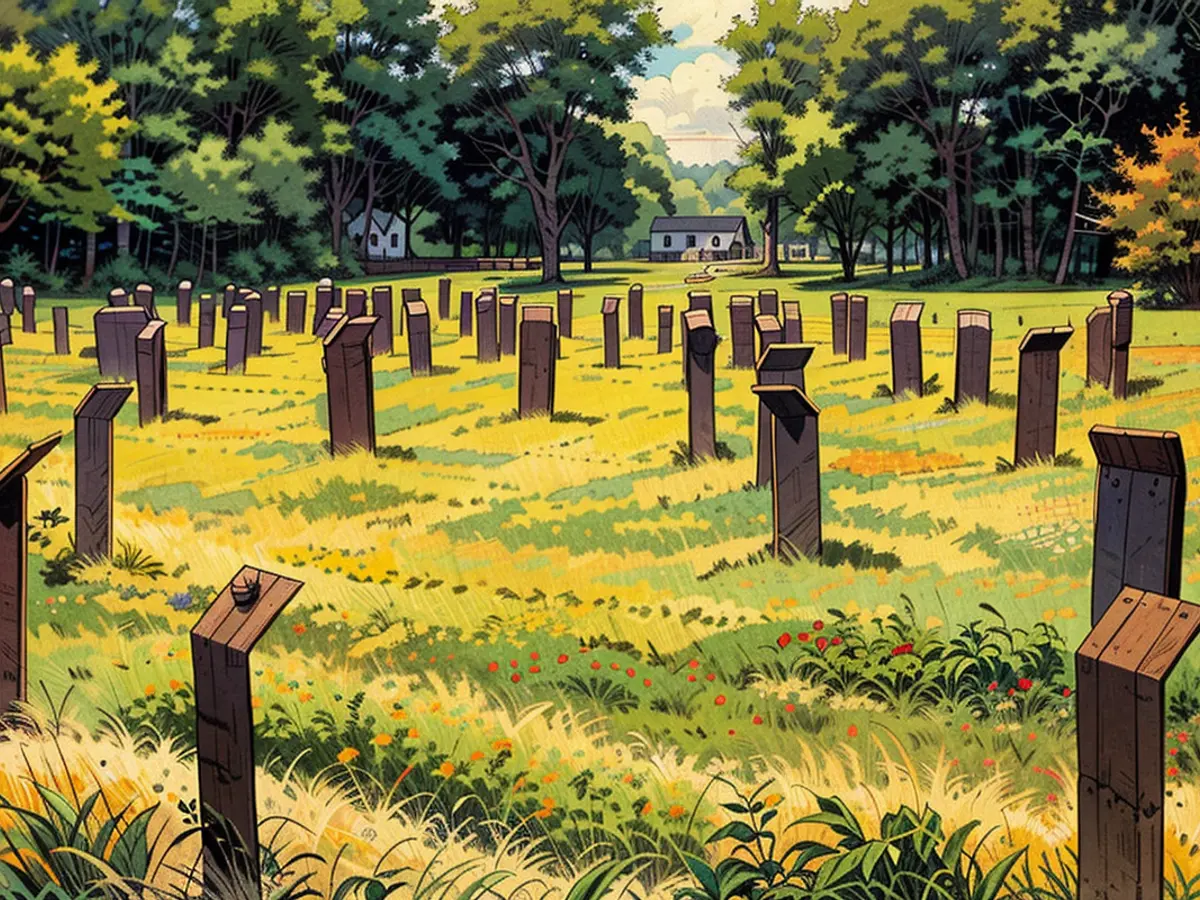Memorials - Project "13 Weeks" recalls the suffering of concentration camp inmates
13 weeks long, since the end of 1944, prisoners from the KZ-Subcamp Husum-Schwesing were used for digging trenches in the northern part of Schleswig-Holstein. Over 300 of them died during this period. To remember the victims, people from various groups, associations, and organizations walk every Saturday for 13 weeks from the campground to Husum. Individuals are also welcome to join.
Walking is a reminder and a warning at the same time
This is the path that the prisoners had to walk daily, mostly on foot, undernourished, with inadequate clothing, and medically neglected, as Pastor Friedemann Magaard, the chairman of the Friends' Association of the KZ-Memorial Site Husum-Schwesing, says. We want to remember the suffering and death of the prisoners through these weekly commemorative walks and at the same time warn against such suffering and dehumanizing politics ever returning.
"For younger generations without direct connections to the events of the Nazi dictatorship, commemoration is an essential source of education," says Florian Lorenzen, the Nordfriesland district administrator. The CDU politician has also taken on the patronage for the project "13 weeks." If we want to prevent such times from returning, we must keep the memory alive.
Minister President Günther is leading a commemorative walk
A total of 14 marches are planned - the first one already on September 13. Minister President Daniel Günther (CDU) will also participate in the opening event. At certain stations along the approximately seven-kilometer-long route, information about the lives and suffering of the more than 2,500 detainees in the camp will be provided. The "13 weeks" project is organized by the Friends' Association in cooperation with the Nordfriesland district.
Subcamp of KZ Neuengamme
According to the information available, approximately 2,500 prisoners from the KZ-Subcamp Husum-Schwesing were used as laborers for the construction of the so-called "Friesenwall." This defensive trench was supposed to prevent a second invasion of the Allies in the North Sea. Many of the prisoners fell ill shortly after being put to work. The number of unfit prisoners reportedly reached over 700 by the end of November 1944. By the end of December 1944, over 300 prisoners had died in Husum-Schwesing.
The Nordfriesian camp counted among the nearly 90 subcamps of KZ Neuengamme and reportedly existed from September 26, 1944, to December 29, 1944.
- The commemorative walks take place every Saturday in the northern part of Schleswig-Holstein, starting from the KZ-Memorial Site Husum-Schwesing, a site of tremendous historical significance related to the KZ-Subcamp Husum-Schwesing.
- Daniel Günther, the Minister President of Schleswig-Holstein and a member of the CDU, has shown his support for the "13 weeks" project, which aims to honor the memory of the over 2,500 prisoners who suffered and lost their lives in the KZ-Subcamp Husum-Schwesing.
- The Memorial Site in Husum-Schwesing serves as a powerful reminder of the atrocities committed during the Nazi era, particularly the consequences of National Socialism on the lives of the prisoners who were forced to work under inhumane conditions in the KZ-Subcamp.
- The long-term impact of the KZ-Subcamp Husum-Schwesing on Germany's history is evident through the numerous memorial sites and initiatives, including the "13 weeks" project, which seek to memorialize the suffering and educate future generations about these tragic events.
- Visiting memorial sites like Husum-Schwesing and participating in events like the "13 weeks" project can help foster a deeper understanding of the past, emphasizing the importance of maintaining a strong sense of empathy and advocating against oppressive politics that disregard human dignity.








